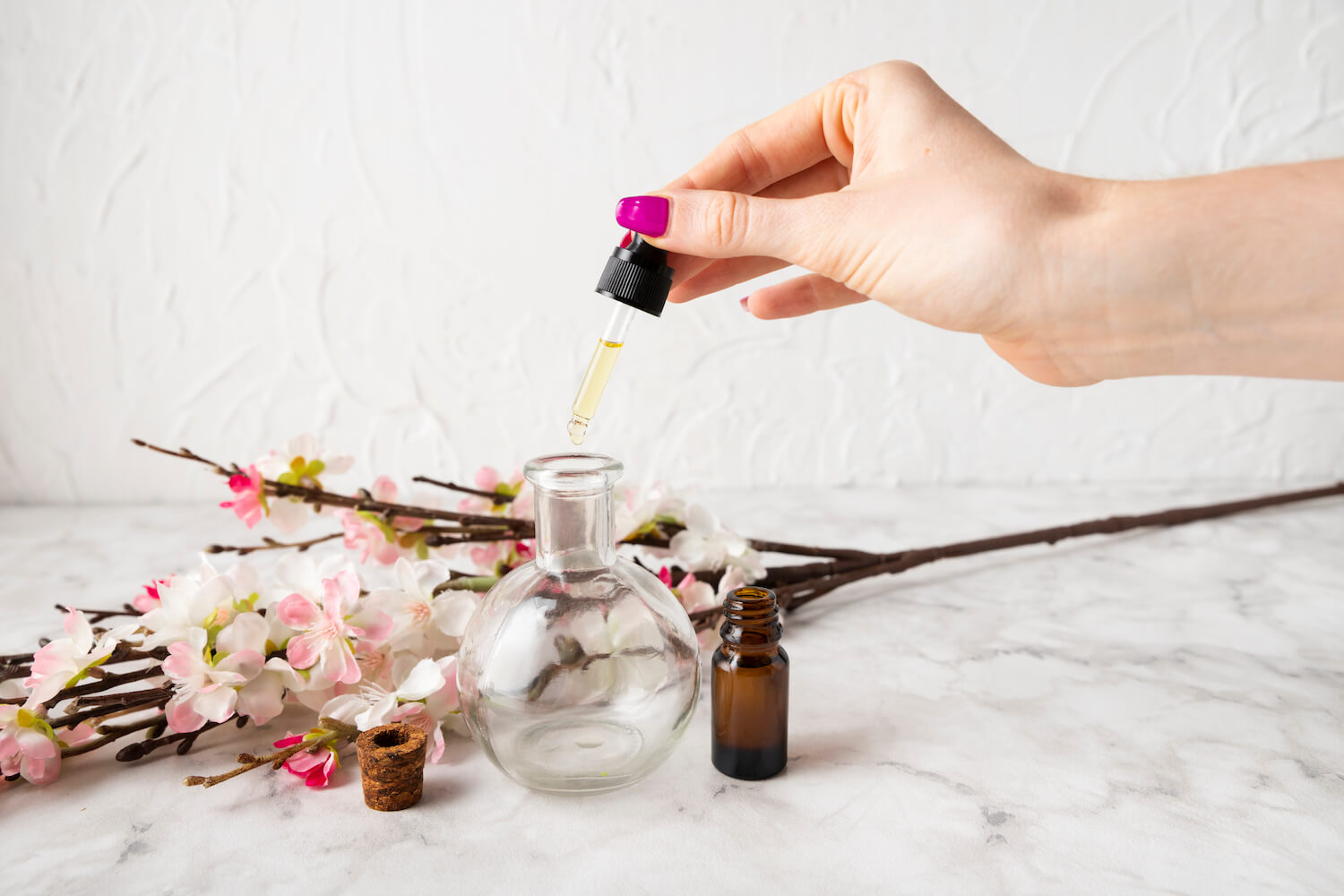- Antonio Banderas
- Azzaro
- Burberry
- Bvlgari
- Calvin Klein
- Carolina Herrera
- Chanel
- Chloe
- Clinique
- Creed
- Diesel
- Davidoff
- Dior
- Dunhill
- DKNY
- Dolce and Gabbana
- Elie Saab
- Emporio Armani
- Ferrari
- Gucci
- Giorgio Armani
- Givenchy
- Hermes
- Hugo Boss
- Hermes Terre
- Issey Miyake
- Jean Paul
- Kenzo
- Lancome
- Lacoste
- Louis Vuitton
- Maison Francis Kurkdijan
- Marc Jacobs
- Men’s Fragrances
- Mini Gift Sets
- Mont Blanc
- Mugler
- Narciso
- Paco Rabanne
- Thierry Mugler
- Tom Ford
- Tommy Hilfiger
- Unisex
- Versace Perfume
- Victor Rolf
- Victorias Secret
- Women’s Fragrances
- Yves Saint Laurent
DIY Perfume: Crafting Your Own Signature Scent at Home

The art of crafting a personalized fragrance is as old as civilization itself, dating back to ancient civilizations like Egypt and Mesopotamia. Perfumes have the remarkable ability to evoke emotions, trigger memories, and leave a lasting impression. While the market is flooded with an array of commercial perfumes, there’s something undeniably special about creating your own signature scent from scratch. In this guide, we will delve into the world of DIY perfume-making, exploring the basics, ingredients, techniques, and tips to help you craft a truly unique and captivating fragrance right in the comfort of your home.
The Allure of DIY Perfumes
There’s a certain allure to wearing a perfume that is exclusively yours, a scent that resonates with your personality, memories, and desires. Creating your own perfume gives you the opportunity to showcase your creativity, experiment with different notes, and ultimately design a fragrance that perfectly encapsulates your essence.
Understanding Perfume Notes
Before you dive into the art of crafting your own perfume, it’s essential to understand the concept of perfume notes. Perfumes are comprised of three types of notes:
Top Notes: These are the initial scents that you smell when you apply the perfume. They are light, fresh, and evaporate quickly. Common top notes include citrus fruits like bergamot, lemon, and orange, as well as herbal and green scents.
Middle Notes (Heart Notes): These notes emerge once the top notes have evaporated. They provide the core of the fragrance and are often floral or fruity. Examples of middle notes include rose, lavender, jasmine, and fruity scents like apple or pear.
Base Notes: These are the foundation of the perfume and give it depth and longevity. Base notes are rich, warm, and slow to evaporate. They include ingredients like vanilla, patchouli, sandalwood, and musk.
Gathering Your Perfume-Making Supplies
To start crafting your own signature scent, you’ll need the following supplies:
- Essential Oils: These are the building blocks of your perfume. Choose oils that you love and that complement each other well. Keep in mind the different note categories and aim for a balanced combination.
- Carrier Oil: Essential oils are highly concentrated and need to be diluted before application. Common carrier oils include jojoba oil, sweet almond oil, and fractionated coconut oil.
- Alcohol or Witch Hazel: These act as a preservative and help the fragrance blend properly. High-proof vodka or witch hazel can be used.
- Glass Perfume Bottle: Choose a dark glass bottle to protect the fragrance from light and air exposure.
- Pipettes or Droppers: These are essential for accurate measurement of essential oils.
- Funnel: A funnel makes it easier to transfer oils into the perfume bottle without spills.
- Blotting Strips or Cotton Swabs: These are used to test and evaluate your perfume as you create it.
- Notebook: Keep a record of the quantities and combinations of oils you use to reproduce or adjust your scent in the future.
Creating Your Signature Scent
- Research and Plan: Before you start mixing oils, take time to research different scent profiles and create a plan. Decide on the main theme of your perfume, such as floral, woody, oriental, or citrusy.
- Start with Base Notes: Begin your perfume creation by adding a few drops of your chosen base notes to the perfume bottle. These oils form the foundation of your scent.
- Add Middle Notes: Slowly add your selected middle notes, experimenting with different combinations to find the balance that resonates with you.
- Finish with Top Notes: Finally, add the top notes. These oils will create the initial impression of your perfume.
- Testing and Adjusting: After each addition, close the bottle and shake it gently. Apply a small amount to a blotting strip or cotton swab and let it dry. Smell the strip to evaluate the evolving scent. If needed, adjust the ratios or add more oils to achieve the desired aroma.
- Dilution: Once you’re satisfied with your blend, add the carrier oil to dilute the essential oils. A common ratio is 20-30% essential oils to carrier oil, depending on your preference for potency.
- Adding Alcohol or Witch Hazel: To preserve your perfume and help the oils blend, add a small amount of alcohol or witch hazel. This step also helps the scent last longer on your skin.
- Aging and Maturation: Allow your perfume to mature for at least a week. During this time, the different oils will meld and the scent will evolve. Keep the bottle in a cool, dark place.
Tips for a Successful DIY Perfume Journey
- Experimentation is Key: Don’t be afraid to experiment with different combinations and proportions. Perfume-making is an art that takes time to master.
- Keep It Simple: When starting out, it’s best to work with a few key essential oils to avoid overwhelming your senses.
- Balance and Harmony: Aim for a balanced combination of top, middle, and base notes to create a well-rounded fragrance.
- Patience is a Virtue: Allow your perfume to age before finalizing your judgment. The scent will change and improve over time.
- Scent Evolves on Skin: Remember that a perfume can smell different on your skin compared to a blotting strip. Test it on your skin to get an accurate representation.
- Personalize Your Labels: Create a label for your perfume bottle that reflects the essence of your fragrance. This adds a personal touch to your creation.
Conclusion
Crafting your own signature scent is a journey that allows you to explore your creativity and connect with the art of perfumery. The process of blending different essential oils to create a harmonious fragrance is both exciting and rewarding. As you embark on this olfactory adventure, remember that each drop of essential oil carries a story and emotion, waiting to be woven into a captivating perfume that is uniquely yours. Whether you’re drawn to floral elegance, exotic oriental notes, or the warmth of woody accords, your DIY perfume will speak volumes about who you are and the experiences you cherish. So, gather your supplies, unleash your creativity, and embark on a scented expedition that is sure to leave an indelible mark on your senses and those around you.
